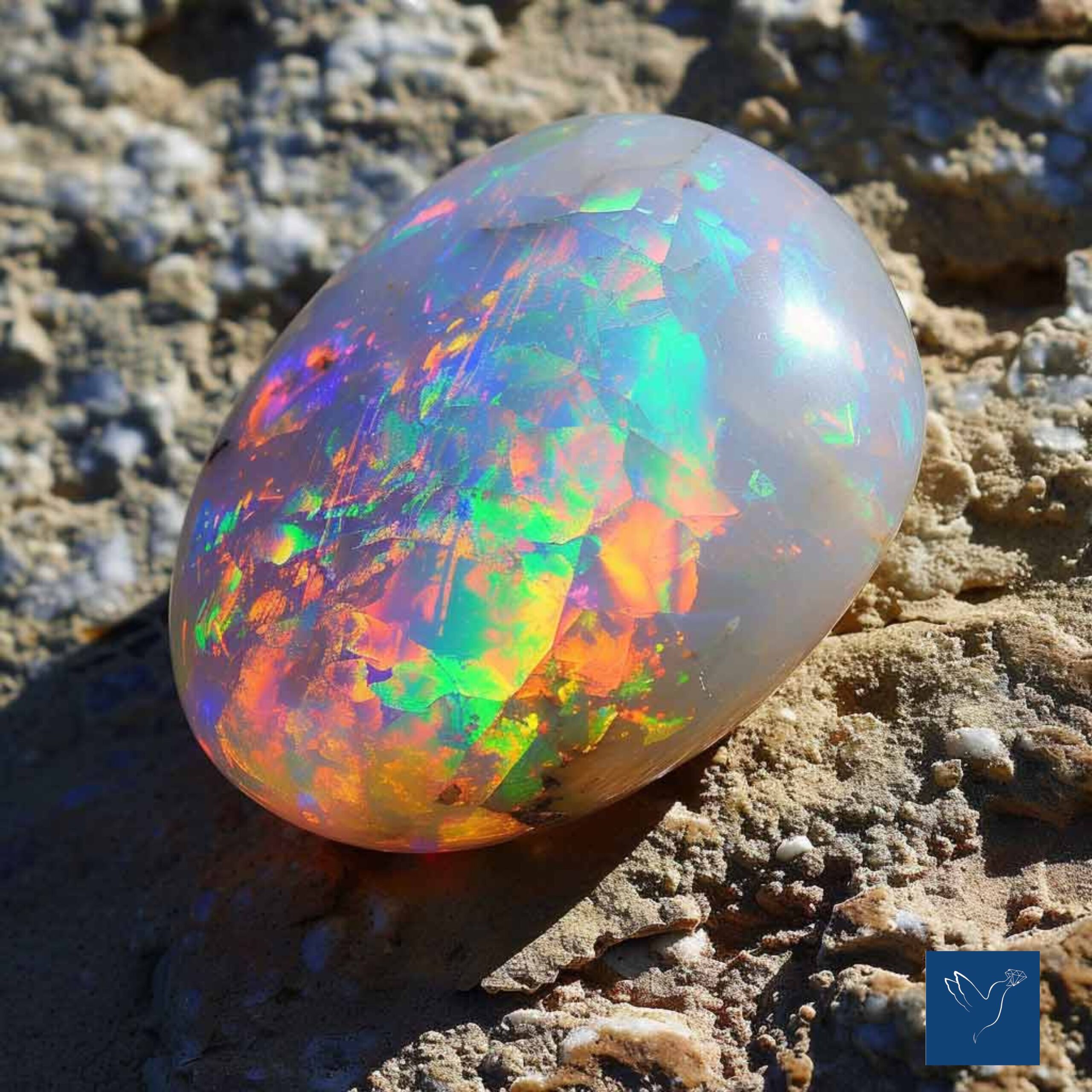How to Identify a Real Opal Stone (And Avoid Fakes)
Among the world’s most enchanted jewels are opals. They have gained popularity among designers and collectors due to their rainbow-like hues and distinct appeal. Opal stones are a popular choice for jewelry manufacturing, whether it be in the form of rings, pendants, or earrings. Today, many people also prefer to buy opal gemstone online because of the wide variety and convenience available. However, as they gain popularity, synthetic and imitation opals are also becoming more widely available. Because of this, it is crucial to understand how to recognize a genuine opal stone before investing your money.
Since the majority of gemstone enthusiasts now shop online, choosing the right website to purchase gemstones is equally crucial. A reliable vendor guarantees that you will receive a genuine item at the appropriate price. Let’s examine some easy methods to determine when your opal is authentic and how to steer clear of typical blunders.
1. Recognize the Different Kinds of Opals
Prior to determining genuineness, you should be aware of the primary opal categories:
- 100% natural solid opal that is extracted straight from the ground.
- Doublet Opal: To enhance the brightness of colors, a thin piece of opal is adhered to a black background.
- Triplet Opal: Like a doublet, but with a clear top layer of protection (usually glass or quartz).
- Synthetic Opal: Opals produced artificially in a laboratory. Despite their realistic appearance, they frequently exhibit recurring color patterns.
- Imitation Opals: Usually composed of colorful plastic or glass, imitation opals are not opals at all.
You can better anticipate what to expect in terms of cost and quality if you are aware of the differences.
2. Seek out color play
The color play of natural opals is one of their most distinctive characteristics. This indicates that when you move the stone in the presence of light, it flashes in various colors.
- The color flashes in natural opals are erratic and sporadic.
- Perfectly consistent, recurring color patterns that don’t appear natural are frequently seen in synthetic opals.
- In contrast to real opals, imitations may be shiny but lack depth and glitter.
- It could be a fake if the colors seem too flawless or too vivid.
3. Examine the sides and back.
The stone can disclose a lot when seen from the side or back:
- Typically solid, natural opals can have irregular side patterns.
- Doublets and triplets frequently exhibit obvious layering, with several materials adhered to one another.
- Surfaces that appear glossy or plastic-like are probably imitations.
- You can avoid paying too much for a phony stone by doing this quick check.
4. Check the Weight
Compared to imitations manufactured of plastic or resin, real opals feel thicker and heavier. The stone might not be real if it feels abnormally light.
5. Enlarge the Surface
A jeweler’s loupe or magnifying lens are excellent tools for inspecting opals:
- Tiny natural imperfections or abnormalities are common in natural opals.
- One telltale sign of synthetic opals is a “lizard skin” or snake-like design.
- Imitations of glass may contain bubbles, which are not present in genuine opals.
6. Scratch and Heat Tests (Take Care!)
- Because they are fragile and contain water, natural opals shouldn’t melt or burn.
- When plastic imitations are heated, they may melt or smell burnt.
- Although a glass replica may be heat resistant, it will not exhibit the depth of color that a real opal does.
Note: Unless done by a professional, these tests should be performed with extreme caution or, better still, avoided.
7. Seek Professional Guidance
It’s better to see a reputable jeweler or professional gemologist if you’re unsure. They are able to verify the stone’s authenticity through testing. Stick to the best website to buy gemstones when making purchases online, where vendors offer authenticity certificates.
Advice on Not Purchasing False Opals
- A certificate of authenticity should always be requested.
- Examine prices; if they seem too low to be true, they most likely are.
- Before making a purchase, educate yourself about the various kinds of opals.
- Purchase from reliable vendors with positive client feedback.
The Significance of This
Opals have spiritual, cultural, and emotional significance in addition to being used as jewelry. Wearing a genuine opal can infuse your life with love, creativity, and good vibes. Although they may seem lovely, fake stones are worthless and meaningless.
Therefore, knowing able to recognize real opals is crucial, particularly if you’re purchasing them as an investment or to make durable jewelry.
Concluding remarks
Natural gems, opals are brimming with hues and tales that no imitation can ever fully capture. You may be sure that an opal is genuine by looking for play-of-color, weight, structure, and authenticity certificates.
Make sure you get opals from reliable vendors if you intend to invest in them, whether for jewelry-making or personal usage. Selecting the top gemstone purchasing website can ease your worry and guarantee that your gem is as stunning as it appears.













